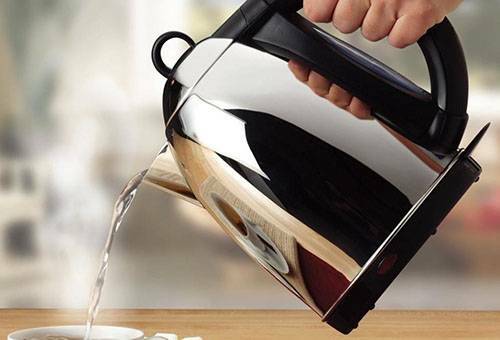Content:
- Descaling
- The most effective descaling methods
- Advantages and disadvantages of household chemicals
Regular boiling of water with a high salt content in heating devices leads to chemical reactions that result in the internal surface of the functional containers being covered with a thick coating. If you do not know how to clean the electric kettle of scale, there is a risk of a decrease in the quality of the device. As the stone formation thickens on the surface of the functional element, it begins to heat water more slowly. After some time, the device stops giving heat to the surrounding liquid and heats up from the inside. As a result, the mechanism burns out and the product comes to complete disrepair. To prevent such a development of events, you need to get rid of the emerging signs of the problem in time by conducting a simple but effective cleaning.

Prevention of scale formation
Compliance with a number of rules will prevent the transition of physical and chemical processes to the negative phase. In this case, the scum in the electric kettle simply does not appear:
- Clean the internal surface of the device every day. For this, a soft sponge is used, which is scraped off a thin coating. It is not recommended to use even the safest chemical reagents.
- It is desirable to clean the water before boiling from excess salts by filtration or sedimentation.
- Unused boiled water must be poured from the container. You can not leave the liquid in the kettle even for a few hours, and even more so, for the whole night.
If you can not remove the scale in the electric kettle or prevent it from appearing, do not wait until the plaque turns into a dense stone layer. The thinner the education, the easier it is to get rid of it.

The most effective ways to remove descaling
The formation of even a very dense salt spray is not yet a verdict. At home, traditional folk remedies and unusual innovative techniques will be invaluable. The main thing is not to try to get rid of the problem with the help of mechanical cleaning. Attempts to scrape off salt with a knife will not help completely remove the scum, but may damage the heating element or damage the kettle's tightness.
- Cleaning with acetic acid( for metal kettles). The product enters with a chemical reaction with salts, destroying the intercellular bonds and leading to the decomposition of complex compounds into simple ones. First, fill the kettle two-thirds with filtered or drinking water. Add a third of 9% vinegar and turn on the device. After boiling water leave it to cool and check the quality of salt separation. If the result suits, carefully wash the container, repeatedly changing the water. Leave it in the open until it dries completely.
- Cleaning with citric acid. A couple of teaspoons of citric acid is bred in a liter of water. Pour the liquid into the kettle and bring it to a boil. After that, the inner surface can be easily cleaned of scale, often the plaque is completely dissolved and you just need to drain the liquid. To citric acid is not left on the elements and walls of the tank, it is necessary to pour clean water into it, boil and drain once.
Council
The above options with lemon and acetic acid are the most aggressive methods. They are recommended to be used extremely rarely, only in those cases when the raid failed to be removed with the help of more sparing approaches.

If these methods have not helped to get rid of the problem, the risk of irreversibility of the process is high. This happens when the heating element is so corroded by scum that it can not start the necessary chemical processes, even if the water boils. Or the body is corroded so much that it can not keep the heat you want. In this case it is easier to purchase a new apparatus.

Pros and cons of household chemistry
Today, a lot of funds have been developed in the household chemistry market, designed to eliminate the problem with salt spray. Before you clean the electric kettle from scale with the help of similar products, you need to consider that it is not known what chemicals are included in their composition. These powders, gels and liquids are really easy to use and available, but they do not always give the desired result, and sometimes even lead to a breakdown of the kettle. It is better to try the more traditional methods first, and leave such a radical remedy in the end.



